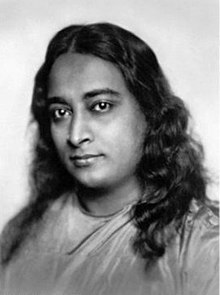imported>Chunbum Park |
imported>John Stephenson |
| (228 intermediate revisions by 8 users not shown) |
| Line 1: |
Line 1: |
| {{Image|Two diode structures.PNG|right|200px|Mesa diode structure (top) and planar diode structure with guard-ring (bottom).}} | | {{:{{FeaturedArticleTitle}}}} |
| | | <small> |
| A '''[[semiconductor diode]]''' is a two-terminal device that conducts current in only one direction, made of two or more layers of which at least one is a semiconductor. An example is the ''pn''-diode, made by joining a ''p''-type semiconducting layer to an ''n''-type semiconducting layer. For a discussion of dopant impurities and the terminology ''p-'' and ''n-''type. see [[Semiconductor#Dopant_impurities|dopant impurities]].
| | ==Footnotes== |
| | | {{reflist|2}} |
| The figure shows two of the many possible structures used for ''pn-''semiconductor diodes, both adapted to increase the voltage the devices can withstand in reverse bias. The top structure uses a mesa to avoid a sharp curvature of the ''p<sup>+</sup>-''region next to the adjoining ''n-''layer. The bottom structure uses a lightly doped ''p-''guard-ring at the edge of the sharp corner of the ''p<sup>+</sup>-''layer to spread the voltage out over a larger distance and reduce the electric field. (Superscripts like ''n<sup>+</sup>'' or ''n<sup>−</sup>'' refer to heavier or lighter impurity doping levels.)
| | </small> |
| ==Types== | |
| Semiconductor diodes come in a large variety of types:
| |
| *''pn''-diode: The ''pn'' junction diode consists of an ''n''-type semiconductor joined to a ''p''-type semiconductor.
| |
| *Zener diode: The Zener diode is a special type of ''pn''-diode made to operate in the reverse breakdown region, and used often as a voltage regulator. The breakdown voltage in these diodes is sometimes called the ''Zener voltage''. Depending upon the voltage range designed for, the diode may break down by either Zener breakdown, an electron tunneling behavior, or by avalanche breakdown.
| |
| *Schottky diode: The Schottky diode is made using a metal such as aluminum or platinum, on a lightly doped semiconductor substrate.
| |
| *Tunnel diode: Like the Zener diode, the tunnel diode (or Esaki diode) is made up of heavily doped ''n-'' and ''p''-type layers with a very abrupt transition between the two types. Conduction takes place by electron tunneling.
| |
| *Light-emitting diode: The light-emitting diode is designed to convert electrical current into light.
| |
| *Photodiode: The photodiode is the inverse of the light-emitting diode, acting as a photodetector, converting incident light to a detectable electric current.
| |
| *''pin''-diode: The ''pin''-diode is made of three layers: an intrinsic (undoped) layer between the ''p''- and ''n''-type layers. Because of its rapid switching characteristics it is used in microwave and radio-frequency applications.
| |
| *Gunn diode: The Gunn diode is a ''transferred electron device'' based upon the Gunn effect in III-V semiconductors, and is used to generate microwave oscillations.
| |
| *Varactor: a ''pn''-junction used in reverse bias as a voltage-variable capacitor for tuning radio receivers. The term ''varactor'' also is used for devices that behave like back-to-back Zener diodes.
| |
| | |
| [[semiconductor diode|...]]
| |
Latest revision as of 09:19, 11 September 2020

Paramhansa Yogananda circa 1920.
Paramhansa Yogananda (5 Jan 1893–7 Mar 1952) was one of the first Indian teachers from the Hindu spiritual tradition to reside permanently in the West, and in particular, he was the first to teach yoga to Americans. He emphasized the universality of the great religions, and ceaselessly taught that all religions, especially Hinduism and Christianity, were essentially the same in their essence. The primary message of Yogananda was to practice the scientific technique of kriya yoga to be released from all human suffering.
He emigrated from India to the United States in 1920 and eventually founded the Self-Realization Fellowship there in Los Angeles, California. He published his own life story in a book called Autobiography of a Yogi, first published in 1946. In the book, Yogananda provided some details of his personal life, an introduction to yoga, meditation, and philosophy, and accounts of his world travels and encounters with a wide variety of saints and colorful personalities, including Therese Neumann, Mohandas K. Gandhi, Luther Burbank, and Jagadis C. Bose.
Paramhamsa, also spelled Paramahamsa, is a Sanskrit title used for Hindu spiritual teachers who have become enlightened. The title of Paramhansa originates from the legend of the swan. The swan (hansa) is said to have a mythical ability to sip only the milk from a water-and-milk mixture, separating out the more watery part. The spiritual master is likewise said to be able to live in a world like a supreme (param) swan, and only see the divine, instead of all the evil mixed in there too, which the worldly person sees.
Yogananda is considered by his followers and many religious scholars to be a modern avatar.
In 1946, Yogananda published his Autobiography of a Yogi. It has since been translated into 45 languages, and in 1999 was designated one of the "100 Most Important Spiritual Books of the 20th Century" by a panel of spiritual authors convened by Philip Zaleski and HarperCollins publishers.
Awake: The Life of Yogananda is a 2014 documentary about Paramhansa Yogananda, in English with subtitles in seventeen languages. The documentary includes commentary by George Harrison and Ravi Shankar, among others.[1][2]
